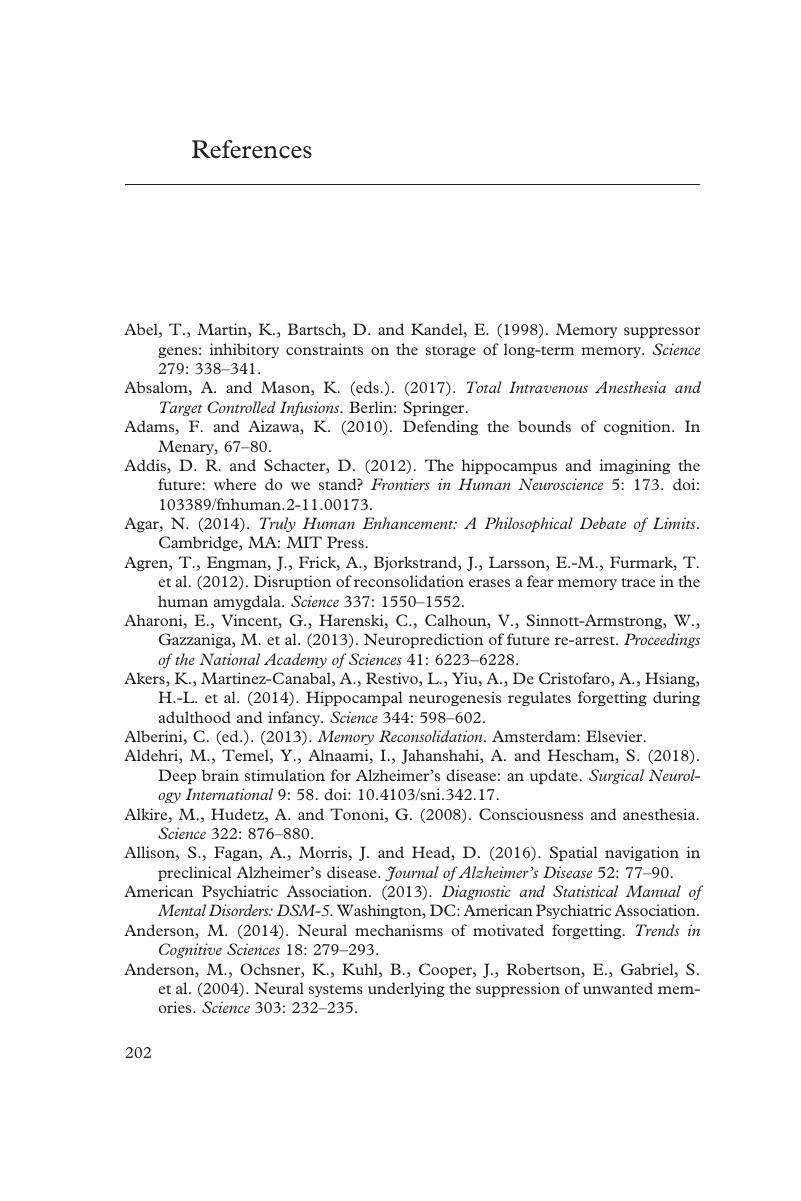Book contents
- The Neuroethics of Memory
- The Neuroethics of Memory
- Copyright page
- Dedication
- Contents
- Figures
- Acknowledgments
- Introduction
- 1 Memory Systems and Memory Stages
- 2 Agency, Identity and Dementia
- 3 Anesthesia, Amnesia and Recall
- 4 Disorders of Memory Content and Interventions
- 5 Disorders of Memory Capacity and Interventions
- 6 Legal Issues Involving Memory
- Epilogue
- References
- Index
- References
References
Published online by Cambridge University Press: 18 July 2019
- The Neuroethics of Memory
- The Neuroethics of Memory
- Copyright page
- Dedication
- Contents
- Figures
- Acknowledgments
- Introduction
- 1 Memory Systems and Memory Stages
- 2 Agency, Identity and Dementia
- 3 Anesthesia, Amnesia and Recall
- 4 Disorders of Memory Content and Interventions
- 5 Disorders of Memory Capacity and Interventions
- 6 Legal Issues Involving Memory
- Epilogue
- References
- Index
- References
Summary

Information
- Type
- Chapter
- Information
- The Neuroethics of MemoryFrom Total Recall to Oblivion, pp. 202 - 224Publisher: Cambridge University PressPrint publication year: 2019
